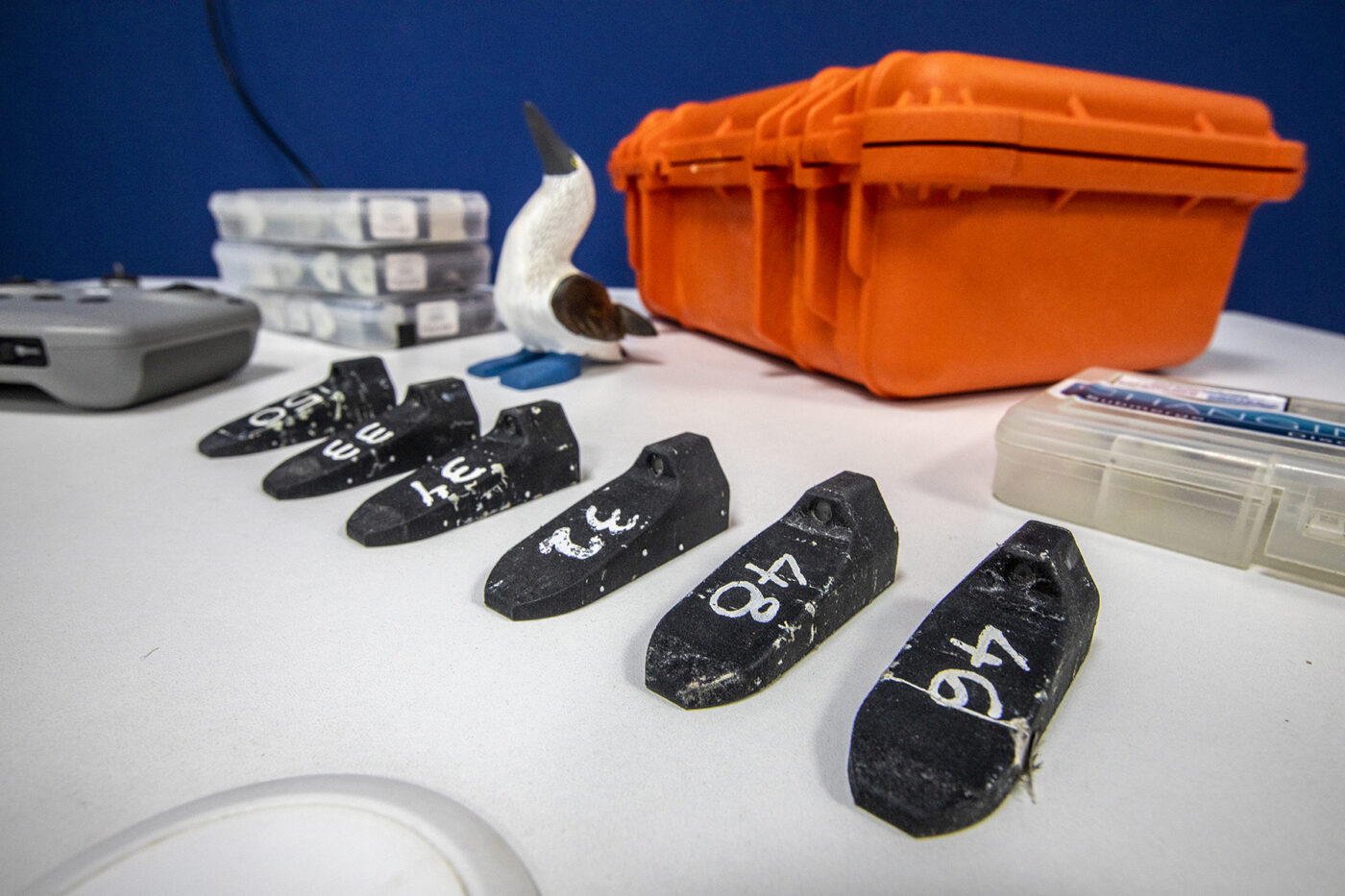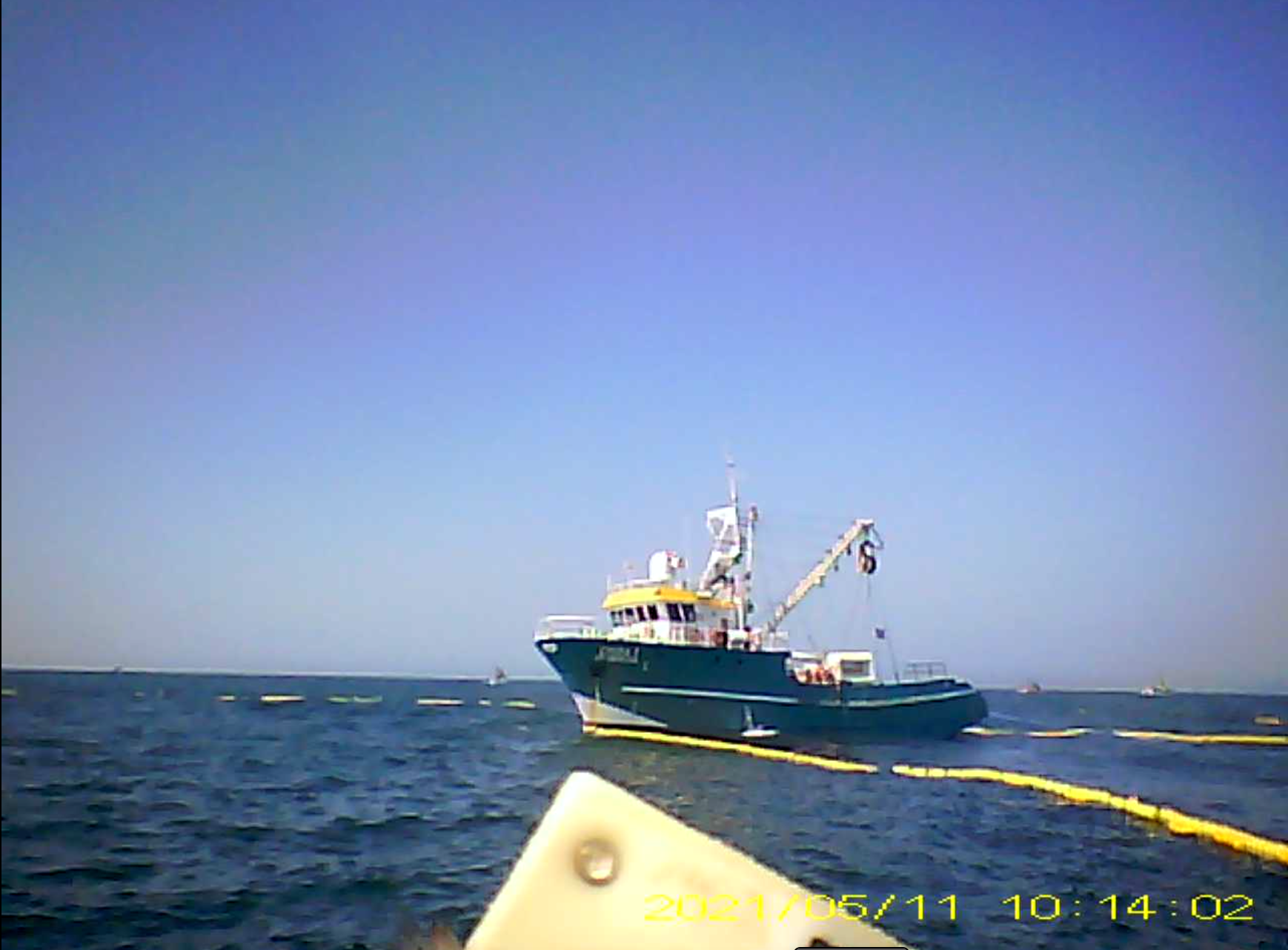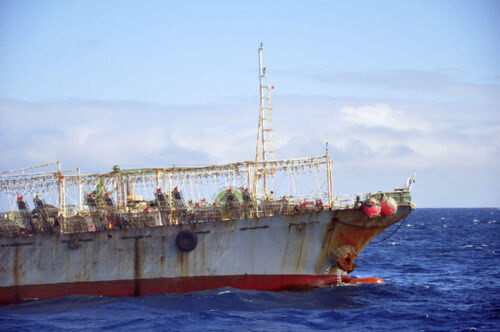An innovative research project allows scientists to see through the eyes of seabirds to understand interactions with the Peruvian anchovy fishing fleet
On any given day, you can find a wreck of seabirds soaring above the waters of Peru’s largest fishery—the anchovy—swooping down toward various fishing vessels hauling in their catch. These sentinels of the sea are capable of observing activities that escape our sight, making them valuable allies when it comes to supplementing information we obtain through satellite monitoring, such as the location, identity or activity of a given fishing vessel.
Anchovy is the primary food of the Peruvian booby (Sula variegata)—the most populous species of seabird inhabiting the Peruvian coast. While these birds, in search of food, are often found in close proximity to fishing vessels, little has been known about their interactions; how they approach fishing vessels, if they follow vessels all the way to fishing grounds, or whether or not they feed directly inside the fishing nets used to haul in catch. But a team of researchers have just made an interesting discovery.
An innovative research project, “Seabirds: Guardians of the Sea,” out of the Universidad Científica del Sur and supported by Global Fishing Watch, is using biologging techniques to “see” through the eyes of these dynamic birds. The research is revealing new and valuable knowledge about the relationship between the anchovy fleet and the feeding habits of the Peruvian booby. But more importantly, these efforts are providing reliable images and data to verify the information obtained through traditional geolocation systems, such as automatic identification systems and vessel monitoring systems.
Marine biologist, Carlos Zavalaga, head of the Marine Ecosystems Research Unit of the Universidad Científica del Sur and the project’s lead investigator, explains, “The objective of this work is to understand the interactions between Peruvian boobies and fishing vessels, but from the point of view of the birds.”
Since November 2020, Zavalaga’s team has attached small GPS devices and video cameras to approximately 300 birds, helping to determine that an average of 20 percent of boobies interact directly with Peru’s largest fishing fleet.
“We’ve found interactions where boobies forage inside the seine nets that are used to fish anchovy— they actually dive into and around the nets while they’re in the water. We also found that boobies are not the only ones interacting with the fishing vessels; other species like pelicans, cormorants, seagulls and even dolphins are present, too,” said the researcher.

Through the seabirds’ eyes
Thanks to this footage, Peruvian scientists are obtaining invaluable information that can help improve management policies for anchovy stocks. According to Zavalaga, since the cameras record the boobies diving into the water as they hunt their prey, researchers have been able to quantify the size of anchovy consumed by the birds.
“This is very important for the management of the commercial fishery because one of the regulations in the anchovy fishery is the incidence of juveniles in catch. If a certain percentage —greater than 10—of juveniles is exceeded in the fishing activity, local bans to protect the resource are set.” Peruvian boobies are essentially acting as guardians of the sea, providing evidence of the size of the fish inhabiting the fishing grounds.
Another way boobies can increase our understanding of what’s taking place at sea is by helping monitor fishing vessels. The cameras used in the project can record, for example, vessels in non-permitted areas, such as protected natural areas. They can also help identify vessels by capturing a registration number or name on the side of a ship. Since these videos are geo-referenced— a date, time and position—it is possible to compare that data with public information and determine if there is a match and identify unreported fishing activity.

Cinthia Irigoin, the project’s co-investigator, is in charge of loading the boobies’ tracks onto the Global Fishing Watch map to compare them with the data from fishing vessels. The map allows researchers to dynamically observe birds’ trajectories and determine at what exact moment they interacted with a specific, well-identified vessel. This allows Irigoin and her team to validate the information they collect through GPS and video cameras carried by the birds.
Location data of Peru’s anchovy fleet is publicly available thanks to the country’s commitment to fishing transparency. Since 2018 the South American country has been publishing its VMS data on the Global Fishing Watch map, making its fleet visible to the world. According to Irigoin, the Global Fishing Watch technology represents a significant advance for those studying seabirds’ behavior.
“Even though researchers visited the islands where the boobies live, it was impossible to follow the birds—to know where they go and when they eat,” said Irigoin. “Being able to have free access to the Global Fishing Watch platform helps us make that perfect match to determine where the birds have gone and when.” Described as a game-changer by those involved in the research project, this observation method will be a vital tool in proposing new policies for sustainably managing anchovy fishing activity.

Global Fishing Watch seeks to promote sustainability and sound management of the ocean through greater transparency and research. We will continue collaborating with the Universidad Científica del Sur and local fishers to increase the knowledge about seabirds through a long-term monitoring program that will help us understand these natural observers of the sea and their interactions with the anchovy fishing fleet. In time, we aim to validate the seabirds’ video records with Peru’s public vessel tracking data, providing the country’s authorities with an extra set of eyes on the sea.


